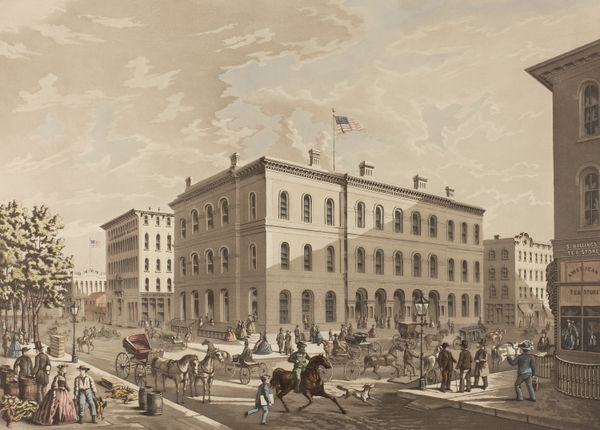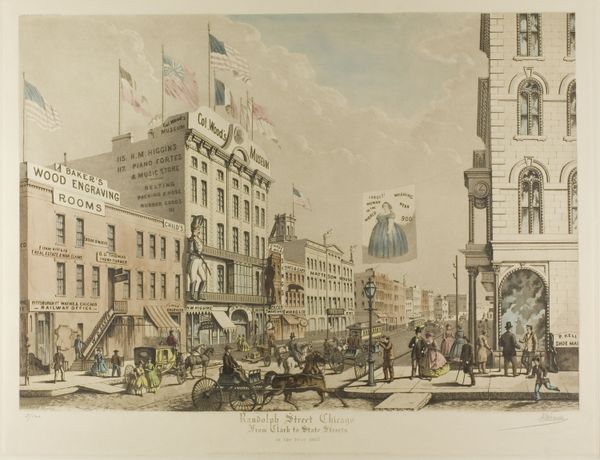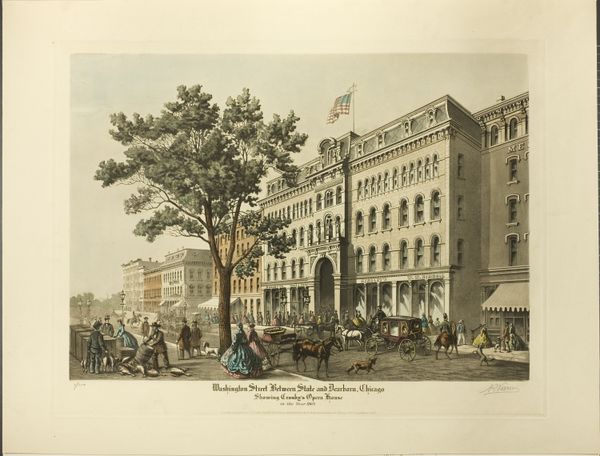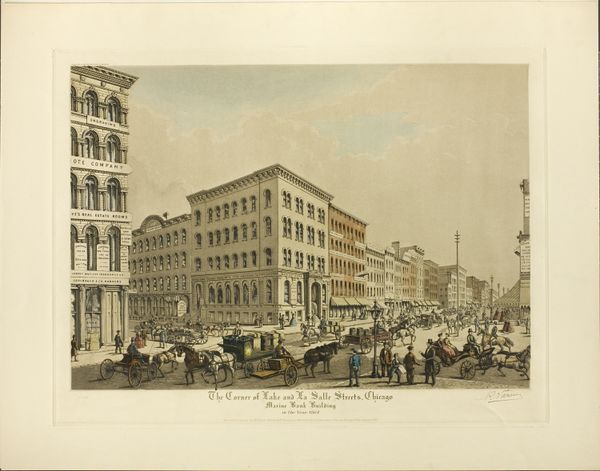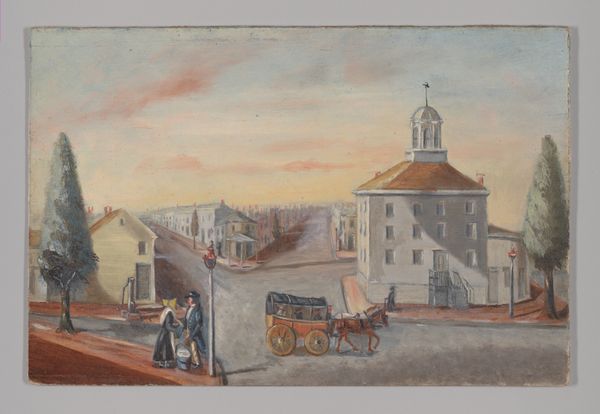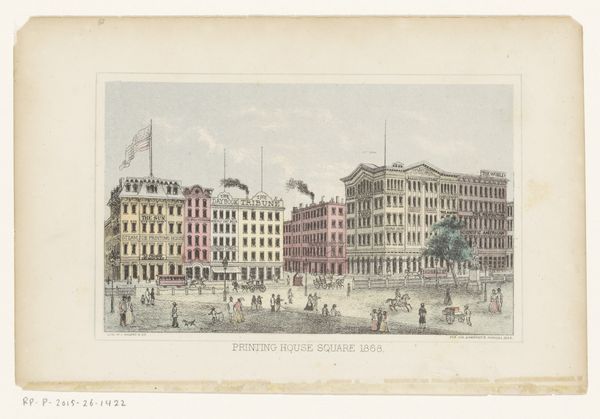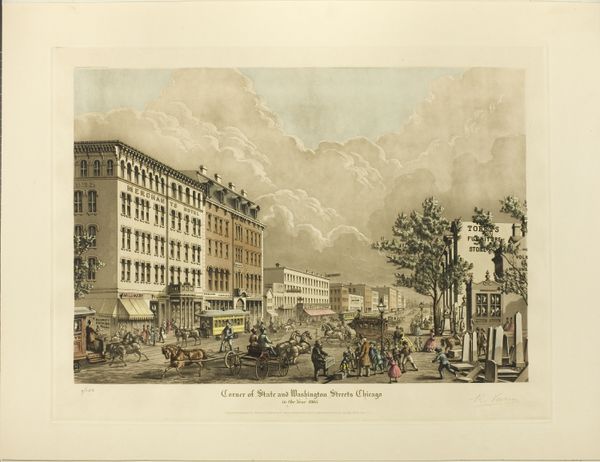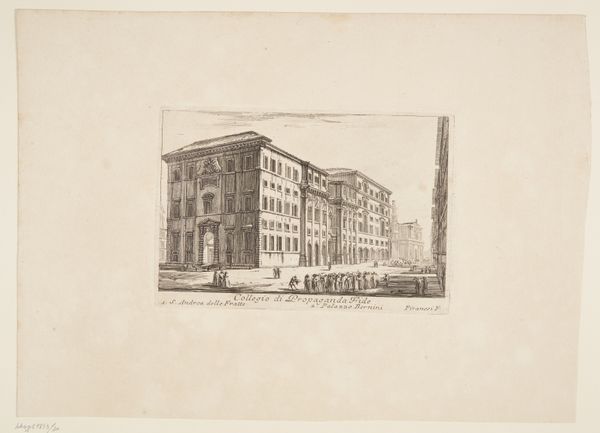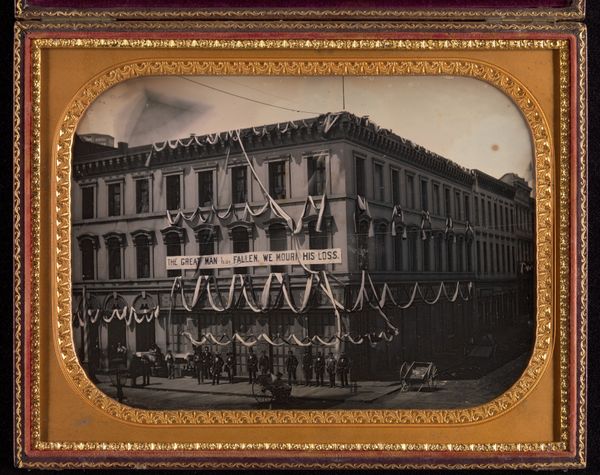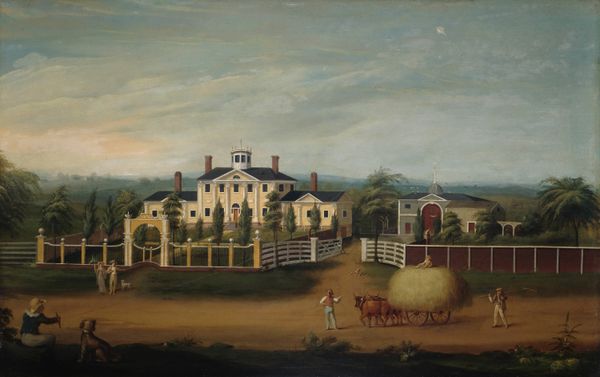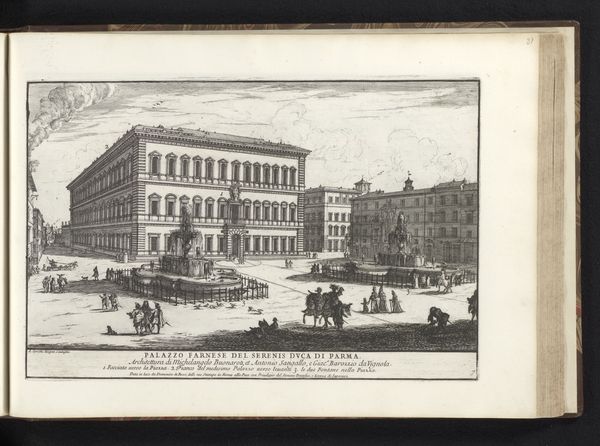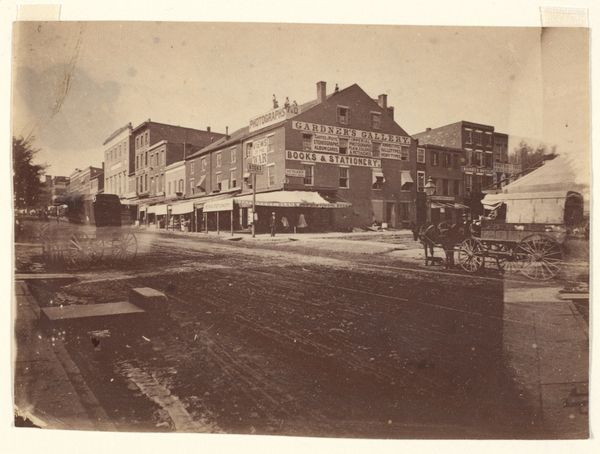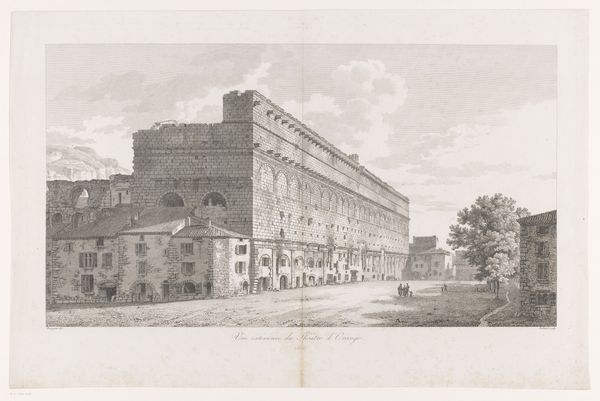
painting, oil-paint
#
portrait
#
painting
#
oil-paint
#
landscape
#
oil painting
#
cityscape
#
genre-painting
#
history-painting
#
academic-art
#
realism
Dimensions: 36 x 50 in. (91.4 x 127 cm)
Copyright: Public Domain
Curator: This is William H. Schenck's "The Third Avenue Railroad Depot," an oil painting likely completed between 1856 and 1860. It gives us such a clear view into New York's rapidly changing cityscape at the time. Editor: My first impression is how orderly the scene feels despite the apparent bustle. The building's facade is strikingly symmetrical, almost asserting control over the sprawling network of tram lines converging before it. Curator: Absolutely, and I think the technique emphasizes that. Look at the crispness of the architectural details, the precision in rendering the brickwork, and the deliberate placement of figures. It evokes a sense of planned progress, even if the reality was far more chaotic. Editor: True, though the composition also hints at the influence of industrial development on everyday life. The materiality is central; those tram tracks, the building’s bricks. This wasn't just about aesthetics. This was about shaping the material world. Curator: Consider the elevated perspective—it allows Schenck to illustrate the web of infrastructure connecting this depot to the rest of the city, reflecting how vital these transportation hubs were to economic and social development. Also, consider how the labor involved, in the production of material to create it. Editor: But there's an interesting tension. While the architecture declares itself with such bold verticality, the figures are almost subsumed into the scene, tiny in comparison. Perhaps suggesting individual experiences being swept along in the tide of urban expansion? Curator: That's a very astute point. These genre-like elements soften the sharp lines, suggesting how ordinary lives were intersecting with modernity's relentless march. He’s trying to document a cultural shift and its tangible effects. Editor: It is amazing that this piece uses Realism to capture that important cultural change! By contrasting static elements against a changing urban landscape. Curator: Agreed. Looking closer, this painting captures an era that shaped so much of the urban fabric we still navigate today. Editor: Yes, from its careful attention to the forms that shape an urbanizing landscape to it being a material thing, we learn a lot.
Comments
No comments
Be the first to comment and join the conversation on the ultimate creative platform.
